How Ralph McQuarrie’s Art Inspired Star Wars Rebels
Ralph McQuarrie's original Star Wars art has continued to inspire the franchise more than 40 years later. Here's how he inspired Rebels...
As Star Wars Rebels nears its end, the show returns to some of the key images of the first season: the wide-open plains and futuristic cities of Lothal, the planet that has always acted as the series’ center of gravity. Lothal has been key to the show from the beginning. The Ghost crew returns to Ezra Bridger’s homeworld time and again, even as the Empire strengthens its foothold on the once-peaceful planet.
In fact, the planet owes much of its look to Ralph McQuarrie’s concept art for the Star Wars Original Trilogy, which has carried through the entire saga as a visual language later artists such as Doug Chiang have continued to follow. Rebels references specific McQuarrie designs throughout its four-season run and follows that initial visual language when creating new characters.
Executive producer Dave Filoni referred to the show as “Tower Story” in early development because of the central image of Lothal’s communication towers. The cities of Lothal are one of the most clearly McQuarrie-inspired elements of the show, demonstrating the warmth of the light in McQuarrie’s landscapes, mechanical work, and the slight grainy texture of the paint.
Concept art for the city of Aldera and the countryside of Alderaan were recycled into Lothal’s Capital City and the stone towers outside the city.
You can see the clear inspiration for Capital City below:
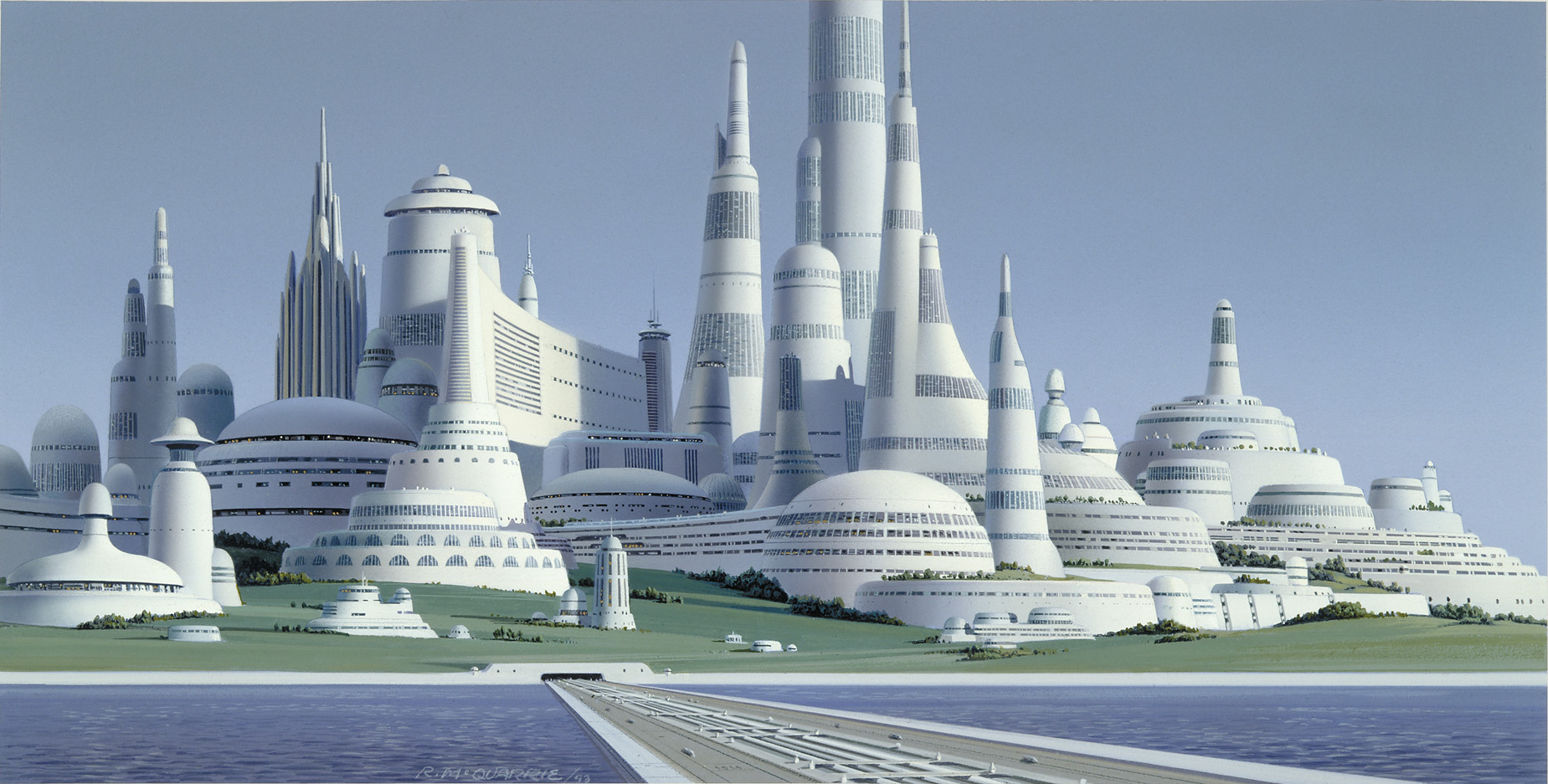
Ralph McQuarrie
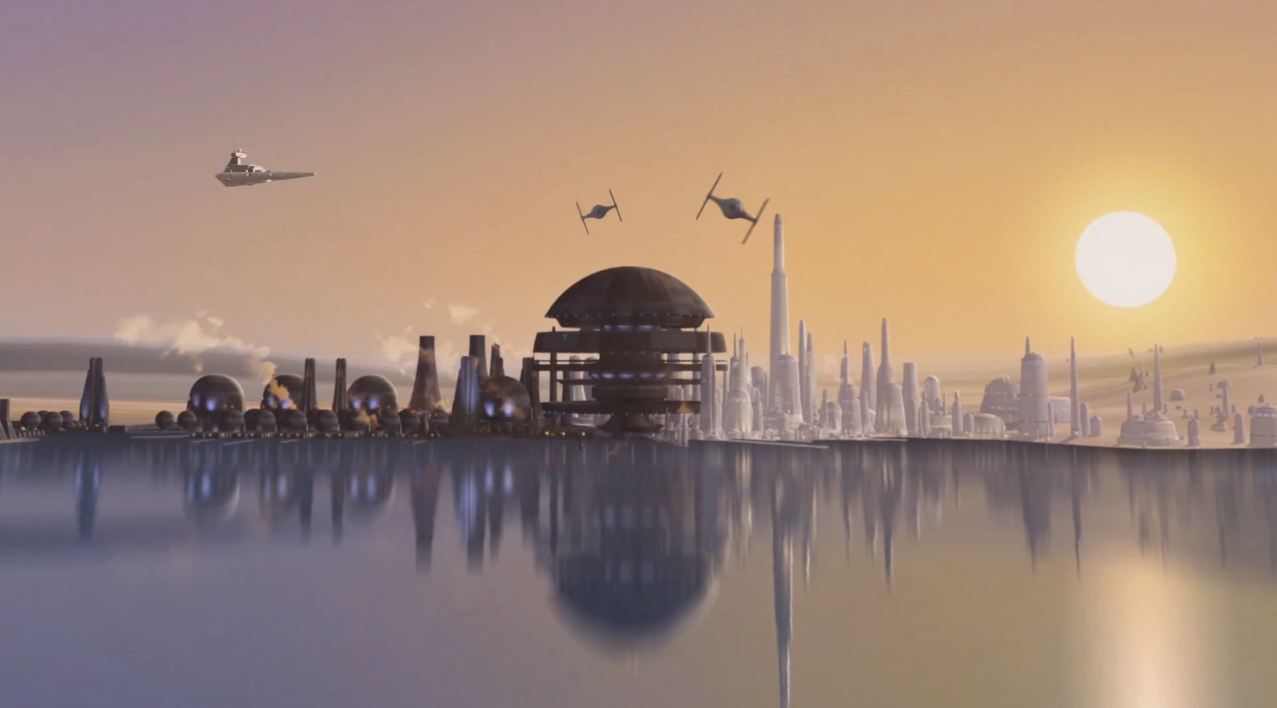
Lothal’s Capital City
Filoni told StarWars.com in 2015, “We wanted something that was going to be reminiscent of the Original Trilogy, so I suggested we base it on Ralph’s designs. I wanted to do that on Clone Wars, but honestly, we didn’t have the know-how to accomplish it at the time. We were able to do it with Rebels though, with round-shaped characters and things that were a bit more classic animation.” Filoni also recycled McQuarrie art in The Clone Wars, as when Hoth concepts became the snowy planet of Orto Plutonia.
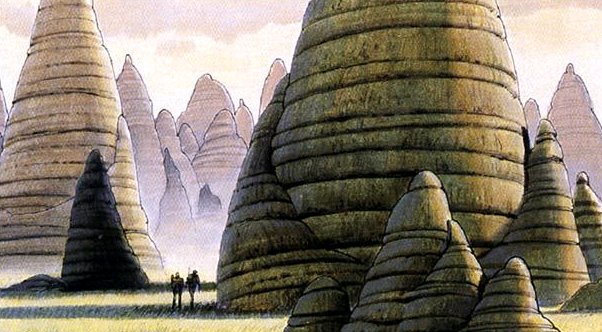
McQuarrie
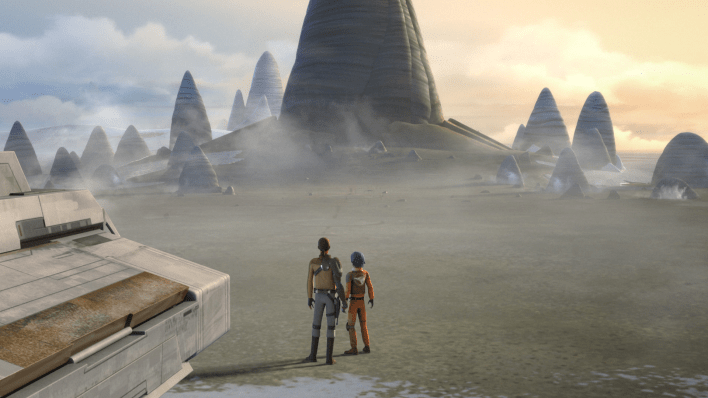
Jedi Temple on Lothal
That roundedness Filoni mentioned is one of the design choices that differentiates Rebels character designs from the more angular faces in The Clone Wars. Characters who appeared in both shows, such as Ahsoka Tano and Obi-Wan Kenobi, have rounder faces in Rebels, more film grain, and less detailed costumes than in the latter seasons of The Clone Wars. At best, the painterly effect makes Rebels unique; at worst, faces and mechanical structures become gelatinous and muddy.
In order to make each frame of the show look like a painting and for the entire show to have a distinct visual style, the artists needed to show a hint of the brushstrokes that might have gone into a painting. That’s why the Rebels art team uses digital brushes that replicate the look of hand-drawn lines and hand-painted art. This gives a grainy look to the scenes that solidifies them and makes the show look more cinematic.
Along with the painterly haze, McQuarrie’s art also displays a distinct use of space. Wide landscapes coexist easily with more intimate, even claustrophobic settings. A key example is the view from the Death Star as the Millennium Falcon approaches, a scene which was replicated almost exactly on film as it had been in the concept art. The foreground characters give scale to the titanic machinery in the background, This is also evident in the design language of the Sith temple on Malachor, where characters walk through narrow hallways with the huge temple looming in the background.
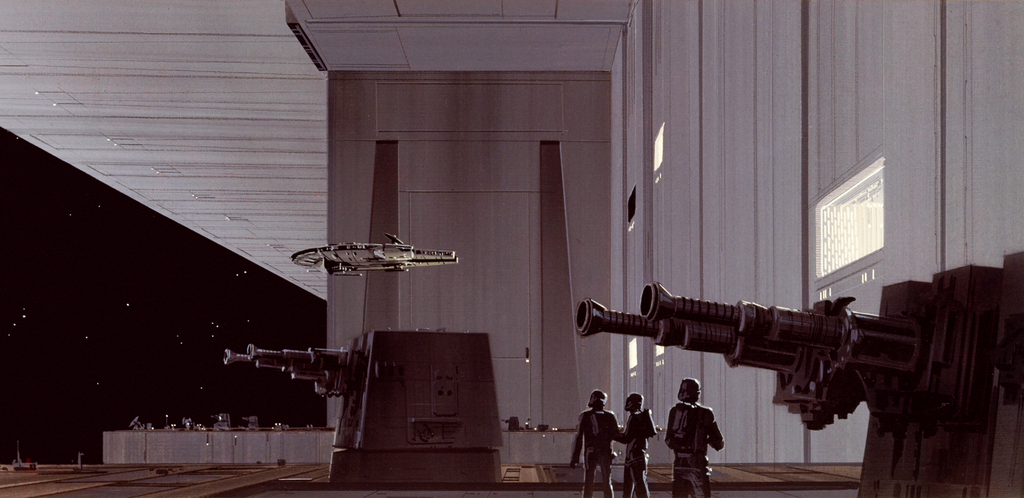
McQuarrie
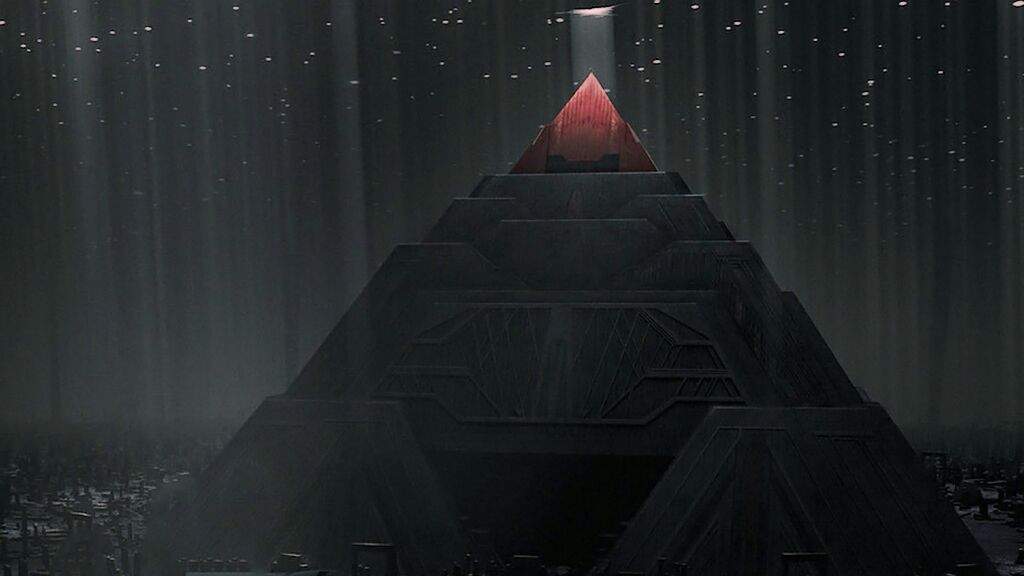
Sith Temple on Malachor
The lightsabers also look particularly unique to Rebels and McQuarrie. Consider the thin, almost translucent blades in this illustration, which was also used for the cover of the A New Hope novelization. Filoni and VFX lead Joel Aron intentionally made the lightsabers in Rebels look more like those in A New Hope, based on McQuarrie’s designs. Like the weapons in the concept art, the lightsabers in Rebels taper to narrow points at the end.
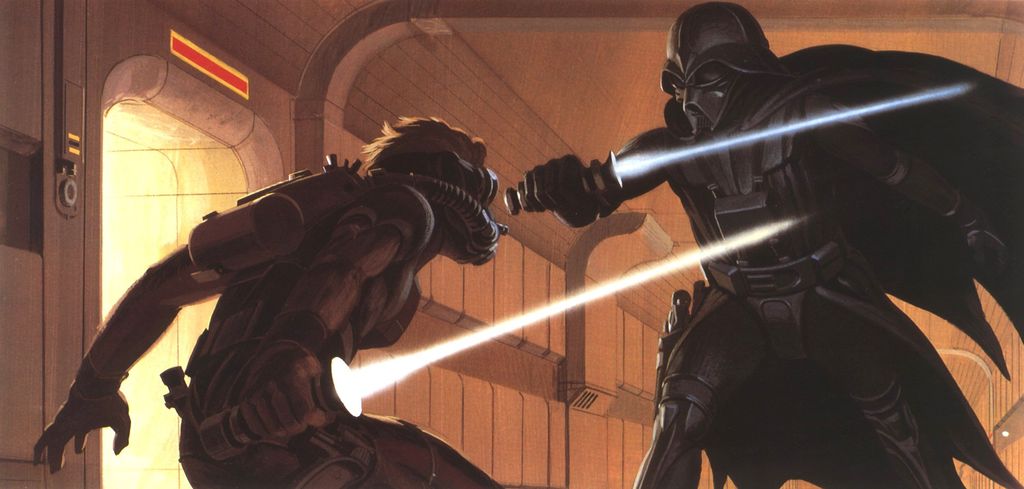
McQuarrie
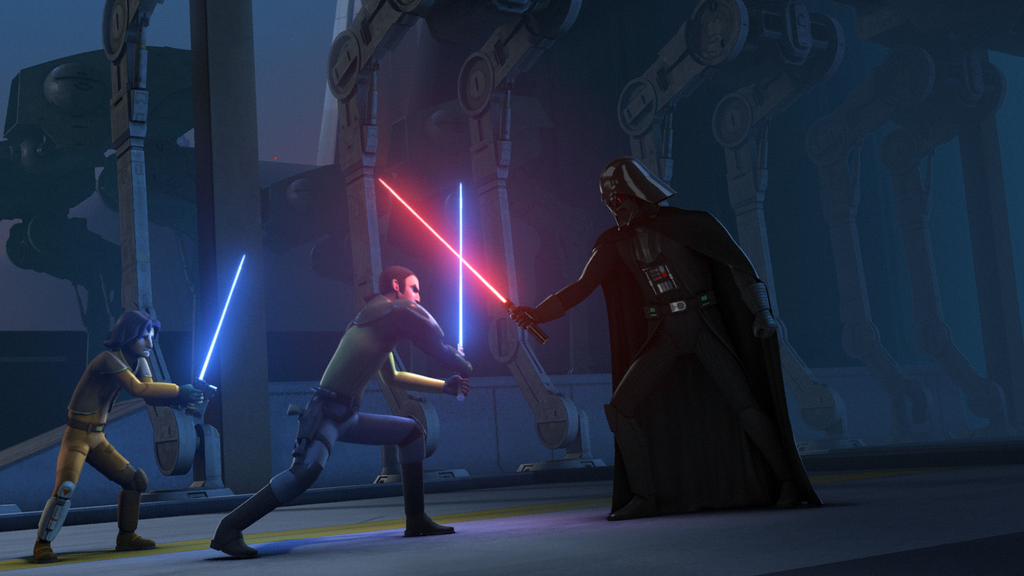
Ezra and Kanan duel Darth Vader
The alien Zeb was based on one of McQuarrie’s designs for Chewbacca. Unlike the Wookiee model that would eventually become a famous part of the Star Wars saga, the early concept had ears, a more prominent beard, and wears clothes. While the bandoleer stayed with Chewbacca, the outfit is more similar to the one Zeb uses. The large blaster in the concept art became Zeb’s bo-rifle. Early Yoda concept art also shares the same catlike ears as Zeb.
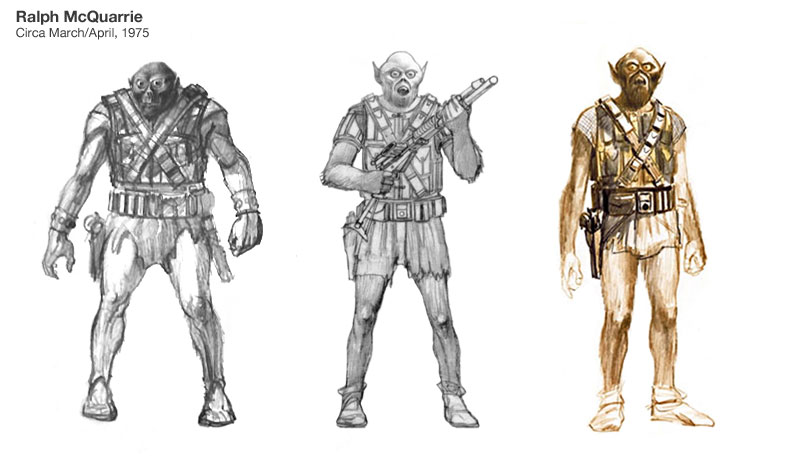
McQuarrie
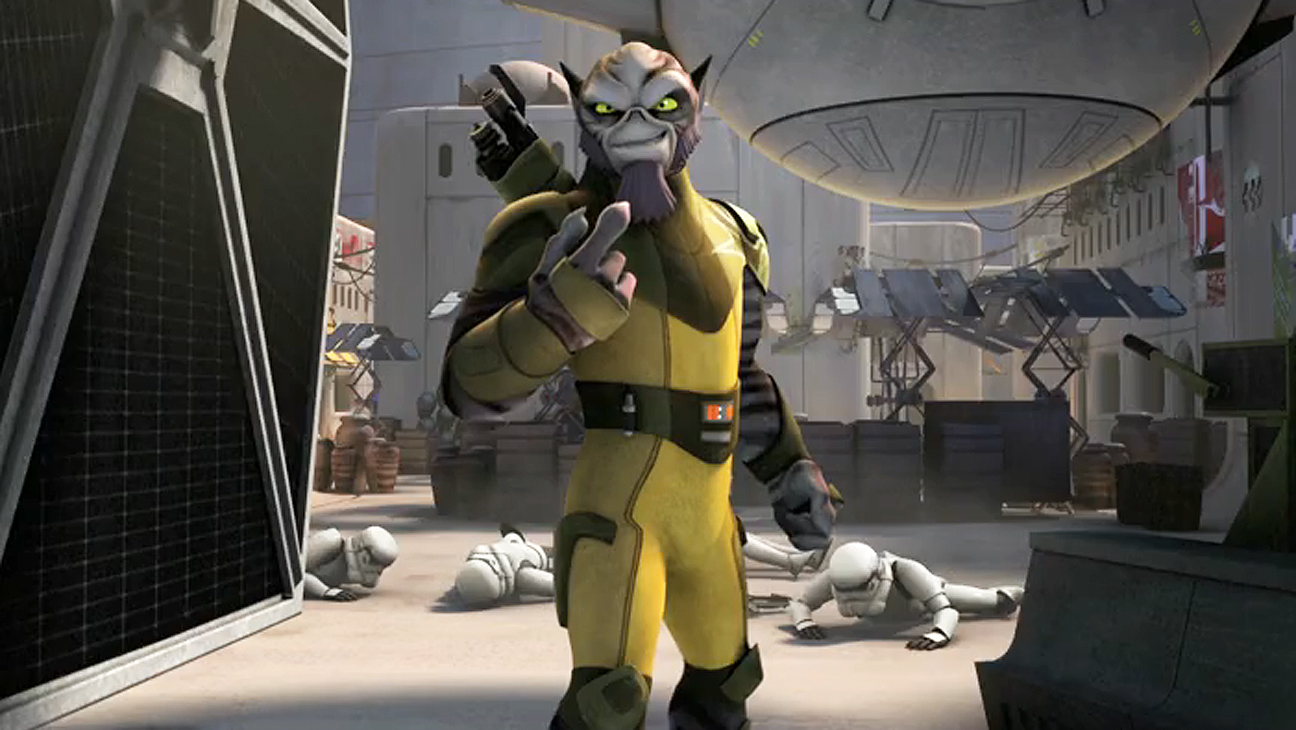
Zeb Orrelios
The droid Chopper also owes a lot to McQuarrie. Chopper’s arms were used on an early concept of R2-D2, the same group promotional shot that features the more Zeb-like Chewbacca. While they were deemed unsuitable for the look of R2-D2, Chopper uses them to gesture in the same way a human would, a fitting addition to a cartoon character who needs to be easily interpreted. (And is sort of rude.)
Because McQuarrie’s design was so central to the visual style of A New Hope, the Darth Vader seen in concept art is nearly identical to the costume used in the films. However, comparing Darth Vader in A New Hope to Vader’s first appearance in Rebels, we can see that his mask is slightly more angular than in other Star Wars films, the grill over his mouth slightly distorted to give it a more elastic shape that fits both animation and the energetic style of McQuarrie’s art. The later cinematic Vader’s design is more rigid, the sides of the helmet less flared than the concept art.
Rebels also uses “this distinctive way that [McQuarrie] would paint the moons and the planets in the sky,” Filoni told The Huffington Post. McQuarrie’s skies include vivid colors, carefully chosen gradients, and splashes of color even in the vacuum of space.
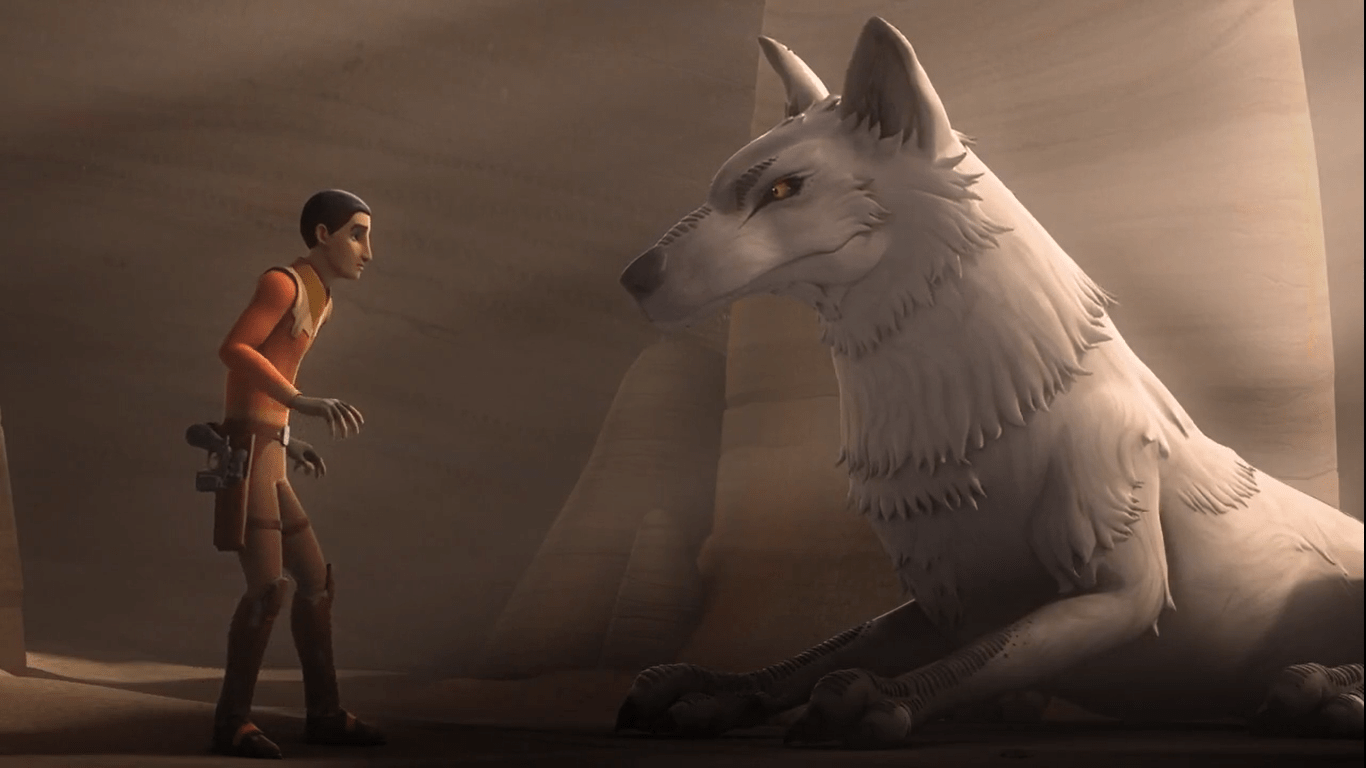
Ezra and the Loth-wolf
In season four, one of the repeated visuals is the loth-wolf. A Filoni-esque creation through and through, the predecessor of the loth-wolf can be seen in doodles of Ahsoka with a wolf and in Captain Wolffe’s clone trooper blazes. There are some similarities to McQuarrie’s creature designs, though: note the rounded silhouette of the wolf’s shoulders and the way it is often contrasted with a starry sky. The creature is fierce, but the rounded elements give it a softness that recalls the whimsical appearance of the Wookiees and banthas McQuarrie created.
Filoni’s own drawings have become a big part of Rebels‘ visual language, as well as many designs created for the Prequel Trilogy and The Clone Wars, such as the aged Darth Maul or the Mortis-like mystique of the Bendu. Rebels continues building off George Lucas’ vision for a vibrant, lived-in science fiction universe, which means that things always go back to McQuarrie, the brilliant pioneer who traveled to the galaxy far, far away before we ever even got to visit it on the big screen.
